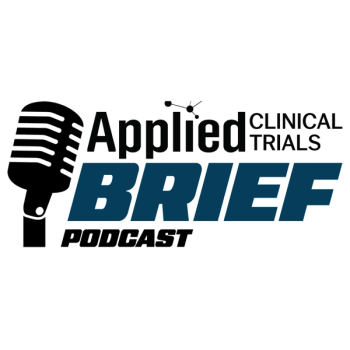Topline Findings
- Promising First-Line Non-Small Cell Lung Cancer (NSCLC) Therapy: Sacituzumab tirumotecan (sac-TMT) combined with tagitanlimab showed strong anti-tumor activity in advanced or metastatic NSCLC patients without actionable genomic alterations.
- High Response Across Subgroups: Confirmed objective response rates ranged from 40% to 78.3% across PD-L1 expression levels and both squamous and non-squamous histologies, highlighting broad efficacy.
- Manageable Safety Profile: The most common grade ≥3 treatment-related adverse events were hematologic (neutropenia, leukopenia, anemia), with no treatment-related deaths observed, supporting tolerability for first-line use.
Results from the Phase II OptiTROP-Lung01 trial (NCT05351788) showed that Sichuan Kelun-Biotech’s sacituzumab tirumotecan (sac-TMT) demonstrated promising anti-tumor activity in advanced or metastatic non-small cell lung cancer (NSCLC) without actionable genomic alterations. Full results from the trial were published in Nature Medicine.1
What is the Potential of sac-TMT plus Tagitanlimab as a First-Line Option for Advanced NSCLC?
"The OptiTROP-Lung01 study supports the promising efficacy and safety of sacituzumab tirumotecan in combination with tagitanlimab as a first-line treatment for patients with advanced NSCLC,” said Michael Ge, CEO, Kelun-Biotech, in a press release. “The results were observed across PD-L1/TROP2 expression levels and histological subtypes and support the advancement potential of sac-TMT from later-line to front-line therapy.”
OptiTROP-Lung01 Trial Design and Patient Cohorts
- The two-part OptiTROP-Lung01 trial evaluated the safety, tolerability, and preliminary antitumor activity of sac-TMT in combination with tagitanlimab in an estimated 110 patients with advanced or metastatic NSCLC.
- Part 1 was a safety run-in phase while part 2 was a cohort expansion phase.
- Patients in cohort 1A received sac-TMT plus tagitanlimab every three weeks.
- Patients in cohort 1B received the combination on a two-week schedule.
- The dual primary endpoints of the trial were the incidence and severity of adverse events (AEs) and objective response rate (ORR).
- Key secondary endpoints included but weren’t limited to duration of response, progression-free survival (PFS), and disease control rate.2
Efficacy Results
- Results from cohort 1A showed a complete ORR of 40%, while patients in cohort 1B demonstrated a 66.7% complete ORR.
- Among patients with non-squamous carcinoma, ORRs were 44.4% in cohort 1A and 64.7% in cohort 1B, while patients with squamous carcinoma had ORRs of 36.4% and 69.0%, respectively.
- When stratified by PD-L1 tumor proportion score, patients in cohort 1A had ORRs of 41.7% (<1%), 38.5% (1–49%), and 40% (≥50%), compared with 57.1%, 63.2%, and 78.3% in cohort B.
- Median PFS was 15.4 months in cohort 1A and was not reached in cohort 1B.
Safety Profile
- The most common grade ≥3 treatment-related AEs were decreased neutrophil count, decreased white blood cell count, and anemia.
- No treatment-related deaths were reported.
Context in Lung Cancer Treatment
- According to the American Cancer Society, an estimated 87% of all lung cancers are NSCLC.
- Lung cancer as a whole mainly occurs in older people.
- The median diagnosis age is 70 years.
- However, a small number of people are diagnosed younger than 45 years of age.
- Lung cancer is currently the leading cause of cancer-related deaths in the United States, with more people dying of it each year than colon, breast, and prostate cancers combined.
- By the end of 2025, it is estimated that there will be 226,650 new cases of lung cancer diagnosed in the United States, with 124,730 deaths.
- Currently, men have a one in 17 chance of getting lung cancer during their lifetime, while women have a one in 18 chance.4
“The publication of results from several studies in top-tier international journals reflects the recognition of our innovation-driven development strategy,” continued Ge, in the press release. “We will continue to work to address critical clinical challenges and unmet medical needs, striving to deliver more therapeutic options and improve quality of life for patients."
References
- Nature Medicine Publishes Results of Phase II Study of Sacituzumab Tirumotecan Plus Tagitanlimab as First-Line Therapy for NSCLC. PR Newswire. August 19, 2025. Accessed August 19, 2025. https://prnmedia.prnewswire.com/news-releases/nature-medicine-publishes-results-of-phase-ii-study-of-sacituzumab-tirumotecan-plus-tagitanlimab-as-first-line-therapy-for-nsclc-302533401.html
- SKB264 Combinatiton Therapy in Patients With Advanced or Metastatic Non-small Cell Lung Cance. Clinicaltrials.gov. Accessed August 19, 2025. https://www.clinicaltrials.gov/study/NCT05351788?utm_source=chatgpt.com
- Phase II Trial Data Lead to FDA Breakthrough Therapy Designation for Ifinatamab Deruxtecan in Extensive-Stage Small Cell Lung Cancer. Applied Clinical Trials. August 18, 2025. Accessed August 19, 2025. https://www.appliedclinicaltrialsonline.com/view/phase-ii-trial-data-lead-fda-breakthrough-therapy-designation-ifinatamab-deruxtecan-extensive-stage-small-cell-lung-cancer
- Key Statistics for Lung Cancer. American Cancer Society. Accessed August 19, 2025. https://www.cancer.org/cancer/types/lung-cancer/about/key-statistics.html





